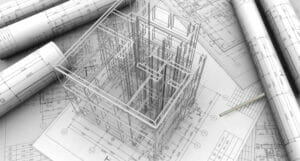Quantum & Delay
Successful project and construction management is dependent on getting cost, time, quality and safety correct. After an incident or event, it is important to understand what damage is a direct result of a project's failure, rather than the result of historic issues. Next, it's imperative to propose the most efficient methodology to approach remedial work. Getting the scope of any project, repair, or construction methodology correct is critical to assessing the impact the event will have on both cost and duration.
WHY APPOINT A FORENSIC INVESTIGATOR?
Hawkins’ experts are experienced in: assessing structures after an incident, construction management, design team leadership, and contract administration. We can assess the impact of incidents for owners, the design Team, or the main contractor or sub-contractors, in relation to various standard forms of Contract.
- We can notify insurers of potential problems prior to a claim arising.
- We provide advice on if there is likely to be a problem, and on the problem’s potential liability.
- We can provide a review of design, project processes and construction management.
- We advise on potential risks, in order to prevent them from resulting in delays or additional costs to a project.
- We can assess the scope of a repair to assist in determining whether it is: accurate, has not exaggerated, or requires further works.
- We can assist in determining exactly what needs repairing.
- We establish if repairs are required either as a direct result of an incident/event or as a result of wear and tear or previous event.
- We can determine whether the construction methodology chosen is the most appropriate, efficient way of completing the work, often minimising both the time taken and cost to complete.
- We can assess the impact of either changes of scope or an event during a project, as well as establish whether the final design, cost, or programme duration have been impacted.
- We support subrogation/recovery efforts.
- We help you to make decisions regarding where legal responsibilities/liabilities lie.
- We help you to defend wrongful claims.
- We produce reports suitable for Court and litigation.
- We provide advice on how to prevent similar events from happening again.
- We provide advice on repair methodologies, maintenance or inspection regimes.



Examples of Typical cases
If you would like to know if we can help, please fill out our enquiry form or give us a call for a free consultation. The list below provides a few examples of cases which we investigate regularly or have investigated in the past.
- A potential design issue was notified to PI insurers prior to a claim arising. We were able to provide advice on if there was likely to be an issue and the potential liability.
- Determining if the damage to a structure is as a result of a weather event or due to general wear and tear.
- Establishing that the repair methodology chosen to repair a utility after damage during construction resulted in unnecessary delay to a project.
- Determining which repairs were required as a direct result of damage due to a fire and which were exaggerated.
HOW WE INVESTIGATE THESE ISSUES
- Hawkins’ experts will visit site to inspect the damage from an incident or event in order to determine exactly what has happened and what needs to be repaired. This is especially important with regards to establishing if repairs are as a direct result of an incident/event or as a result of wear and tear.
- Interviewing witnesses and parties involved to gather information and narrative about an incident or project.
- Review of photographs, invoices, programmes and construction drawings to gain an understanding of a project
- Review of programmes and project correspondence to establish time frames.
SPEAK TO ONE OF OUR EXPERTS
Related areas of expertise
Civil & Structural Engineering
Whether it is a subsiding foundation, a collapsing structure or a flooding drainage system, it can be hard to understand at first glance what part of a large system has gone wrong.
Architecture
The role of the architect sits at the heart of the building industry. In many projects, the architect is responsible not only for the design of a building, but also for the coordination and management of that design and the team of consultants engaged by the client.








